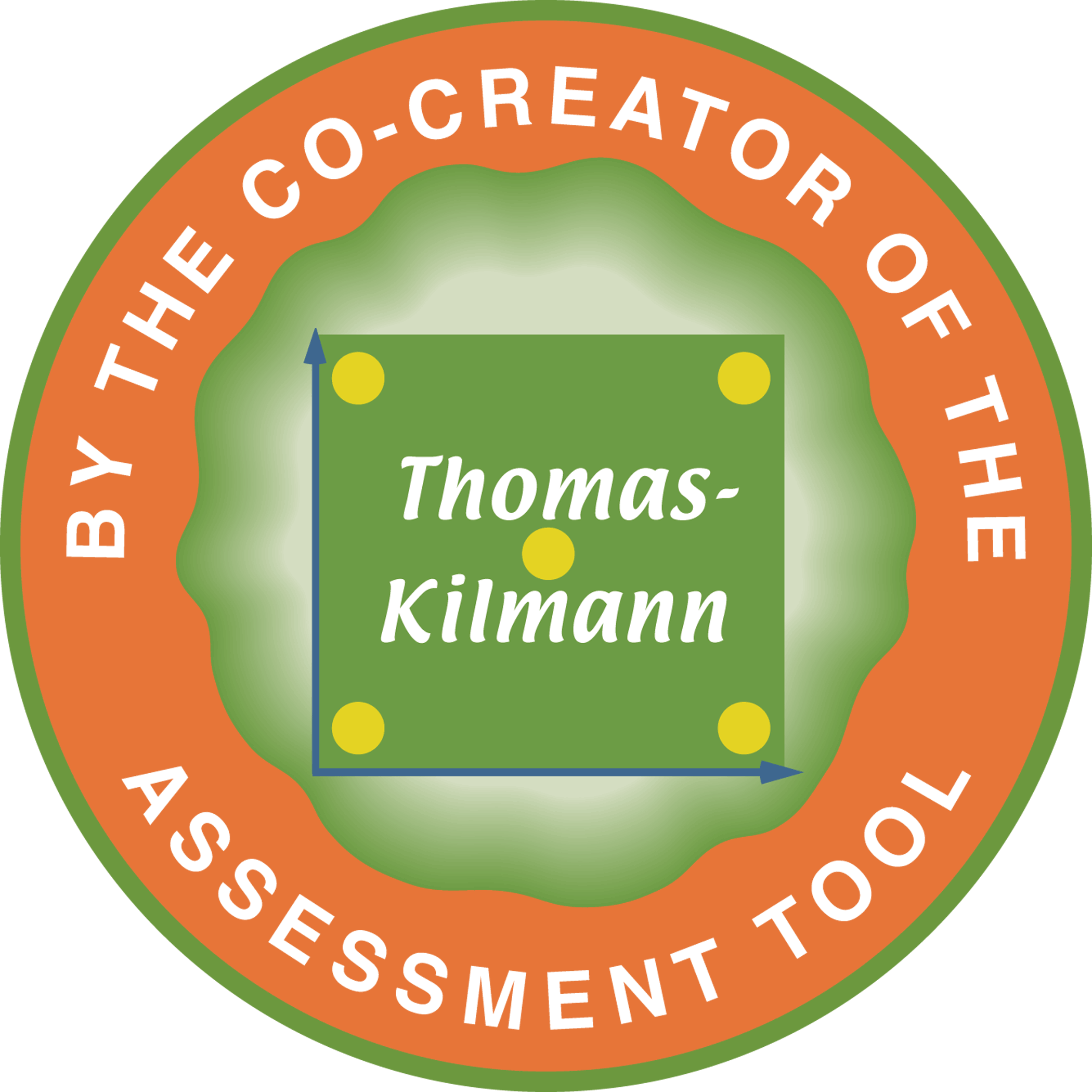05 Jan Modifying the TKI Instructions for Different Conflict Situations
Ralph H. Kilmann, co-author of the Thomas-Kilmann Instrument (TKI)
Instead of asking members to respond to the thirty items in general terms, I provide these modified instructions: “IN THIS ORGANIZATION, when you find your wishes differing from those of another person, how do you usually respond?”
As a second TKI assessment, I ask the same people to respond to these different instructions: “OUTSIDE THIS ORGANIZATION, when you find your wishes differing from those of another person, how do you usually respond?”

Very often, people’s TKI Profiles (graphing which conflict modes are in the high twenty-fifth percentile and which ones are in the low twenty-fifth percentile) vary dramatically across these two sets of instructions. Such differences provide valuable information about the effects of the organization’s culture and reward system on conflict-handling behavior.
Once we open the door to different TKI instructions for different purposes, many other possibilities come to mind. Another classic distinction is between work life and personal life, which is a slight variation of the one mentioned above. But we could also ask respondents these variations: “In client/customer situations, when you find your wishes…?” “In high-stress situations, when you find your wishes…?” “With regard to your children…?” With regard to your spouse or significant other…?” “With regard to your parents…?” “With regard to your immediate supervisor…?”
Indeed, it is up to the purpose and creativity of the facilitator to devise such specific, but crystal-clear changes in TKI instructions in order to zero in on a particular situation. Although some people choose the same conflict modes no matter what (which is often revealed by certain modes being in the very high percentiles on the TKI Profile), other people choose very different modes in different situations. Naturally, the objective in modifying the TKI instructions is to provide a more accurate assessment — so people can improve their conflict-handling behavior and thus get their most important needs met in a specific situation.
By the way, I have never asked people to respond to more than three TKI assessments in one workshop. Most often I have them respond to two, which is meant to highlight different behavior in two different situations (e.g., work life versus personal life). Taking more than three assessments is too tedious for most people — and unnecessary. Usually, with careful planning, the trainer/consultant can choose the two (or three) most meaningful perspectives that will provide their clients with context-specific insights about conflict management.
But always remember: The modified TKI instructions should always be kept clearly in mind, as you or your clients respond to all thirty items in the instrument.
Kilmann Diagnostics offers a series of eleven recorded online courses and nine assessment tools on the four timeless topics: conflict management, change management, consciousness, and transformation. By taking these courses and passing the Final Exams, you can earn your Certification in Conflict and Change Management with the Thomas-Kilmann Instrument (TKI). For the most up-to-date and comprehensive discussion of Dr. Kilmann’s theories and methods, see his 2021 Legacy Book: Creating a Quantum Organization: The Whys & Hows of Implementing Eight Tracks for Long-term success.




